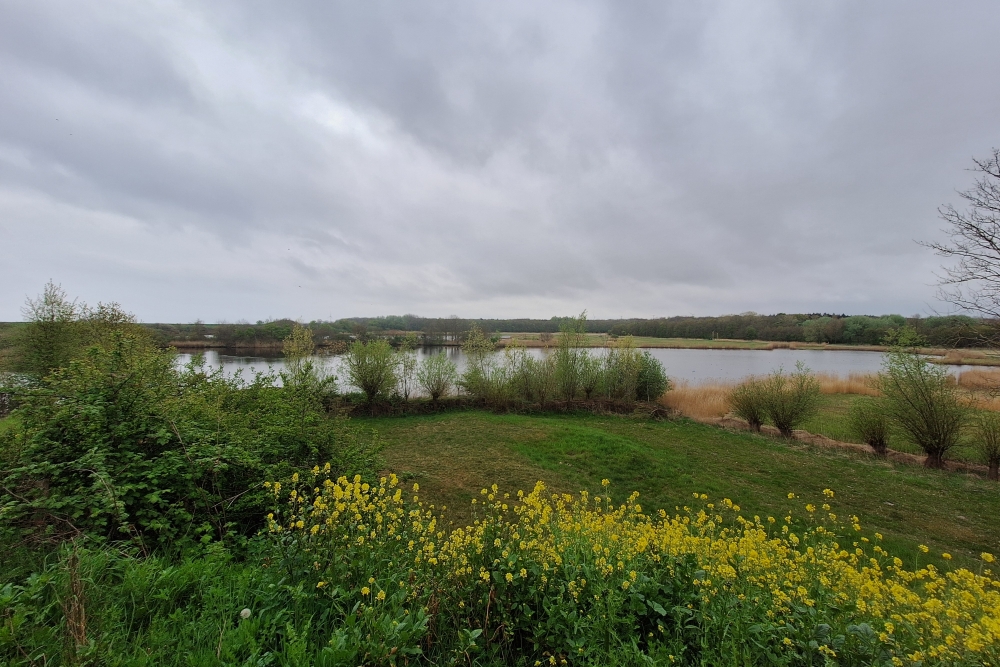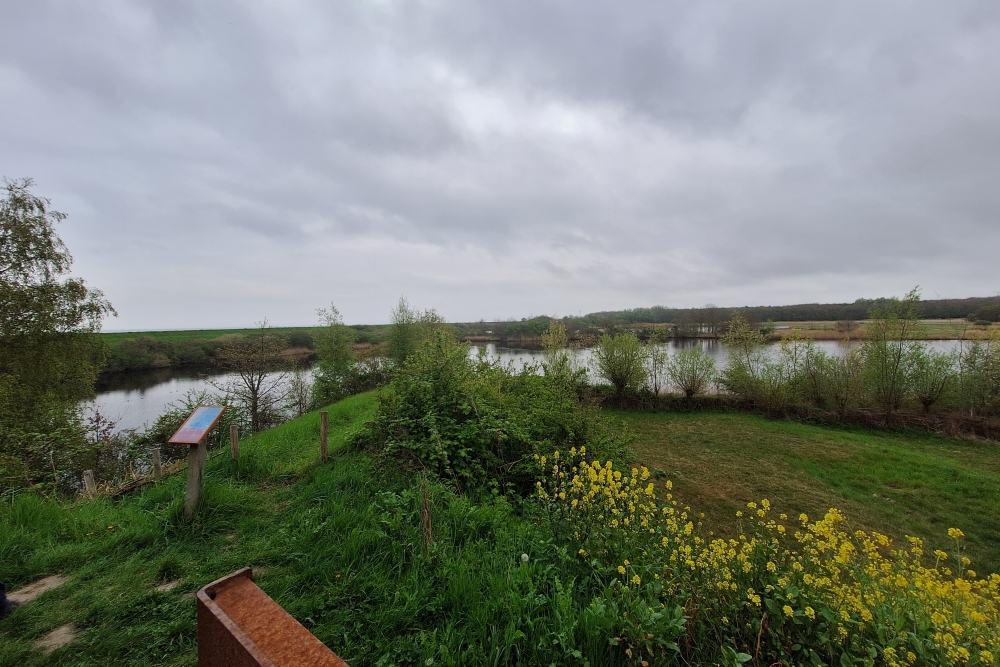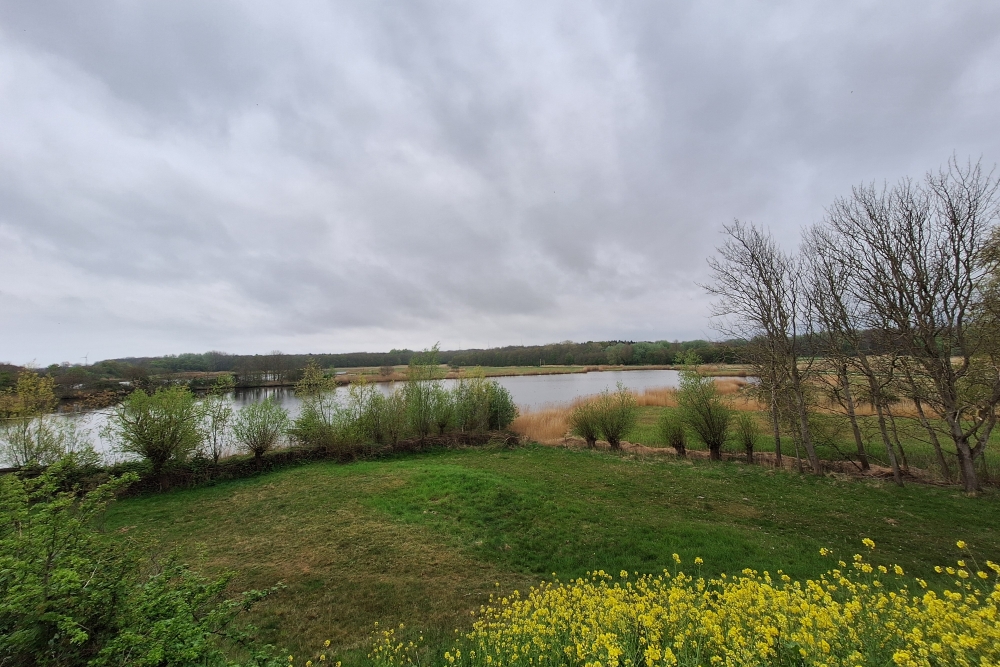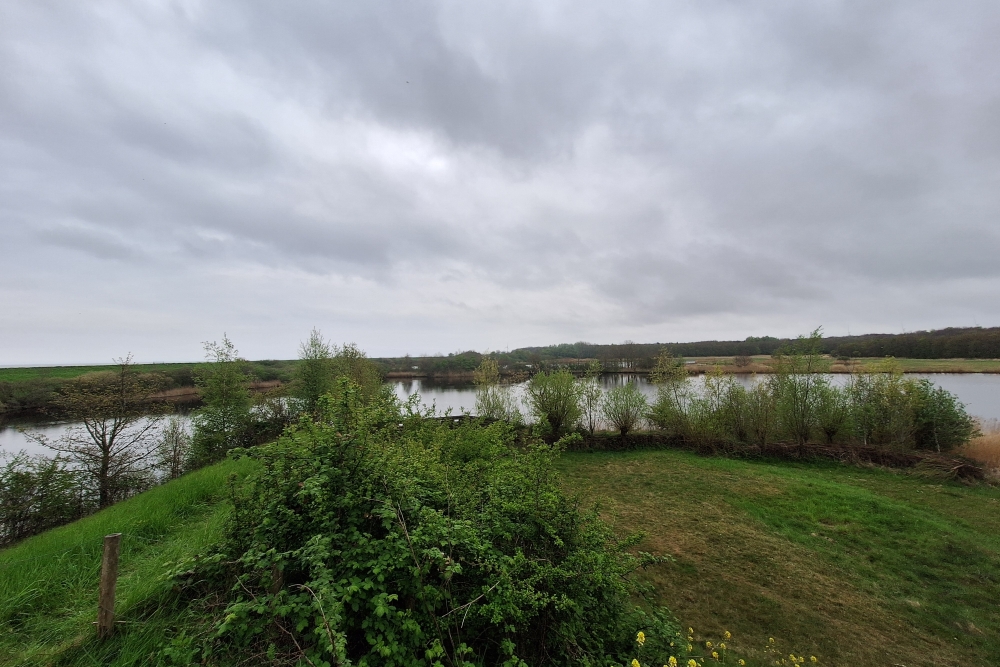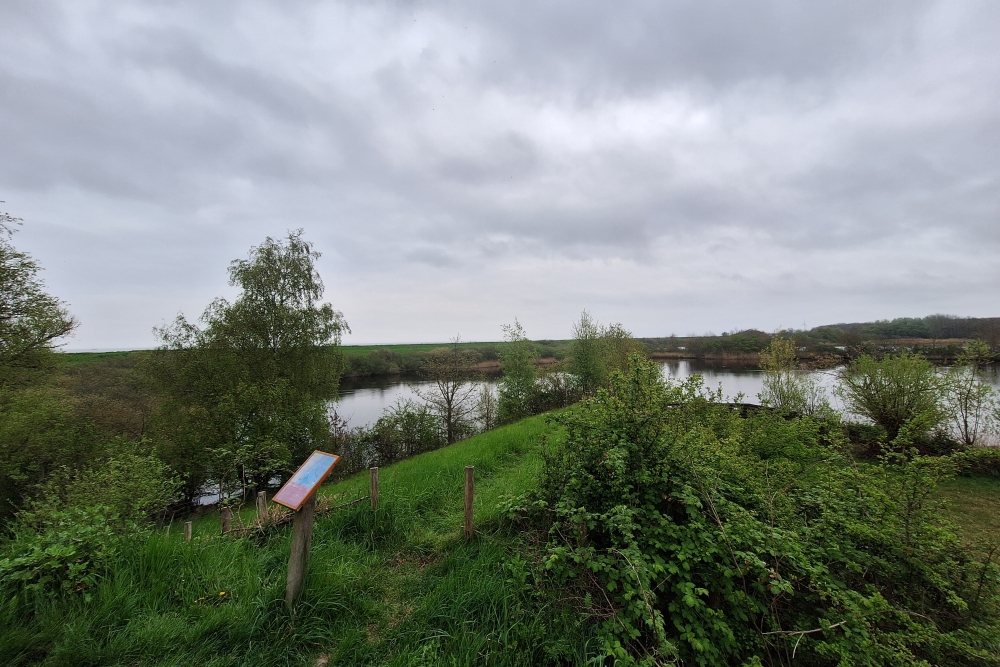Craters Dike Wieringermeer
The Northern Wheel and the Wheel Crater are silent but impressive reminders of the dyke breach of 17 April 1945 near Wieringerwerf.
What is a wheel?
A wheel (also called a whirlpool or whirlpool) is formed when a dyke breaks and the water rushes into the land behind it with enormous force. This force carves a deep crater in the ground. After the water has receded, a small lake or pool remains – this is the wheel. These are literally the scars left in the landscape by a breach.
The Northern Wheel
The Northern Wheel is one of the largest and most visible wheels remaining after the dyke breach in 1945. It is located near the spot where the Germans blew up the dyke. The wheel was formed by the enormous force of the water rushing in from the IJsselmeer.
Today, the Northern Wheel is a peaceful, green area. It is a place for nature, but also a place of remembrance. In the surrounding area, you can still see traces of the restoration work carried out after the war.
The Wheel Crater
The term ‘wheel crater’ usually refers to a similar phenomenon: a deep pool or pit created by the breach in the dyke. In the case of Wieringerwerf, it is a specific place which, like the Noordelijk Wiel, serves as a reminder of the force of nature on that day. It is also a sign of the vulnerability of our polders and how dependent we are on strong dykes.
Heritage of water and struggle
Today, both places are valuable landscape features and are often visited by people who want to learn more about the history of the Wieringermeer, the war years and the Dutch struggle against the water.
What was lost, but also a tribute to the cooperation, perseverance and hope during the reconstruction period.
Do you have more information about this location? Inform us!
Source
- Text: RJArmy.nl
- Photos: RJ Army
Nearby
Point of interest
- Memorial Hole in the Dike Wieringerwerf - Wieringerwerf
- Blown-up Dyke at Wieringerwerf - Wieringerwerf
- Refugee Camp "Oude Zeug" - Wieringerwerf
Monument
- Memorial Destruction Dike Wieringermeer - Wieringermeer
- Dike Restoration monument - Wieringerwerf
- War Memorial Wieringerwerf - Wieringerwerf
Cemetery
- Dutch War Grave General Cemetery Middenmeer - Middenmeer (Wieringermeer)
- Commonwealth War Graves General Cemetery Middenmeer - Middenmeer (Wieringermeer)
Fortification
- Stelling Den Oever - Work Xll - Den Oever
- Stelling Den Oever - Heavy MG Casemate Werk X - Den Oever
- Auxiliary Bandage Bunker XIII - Den Oever
